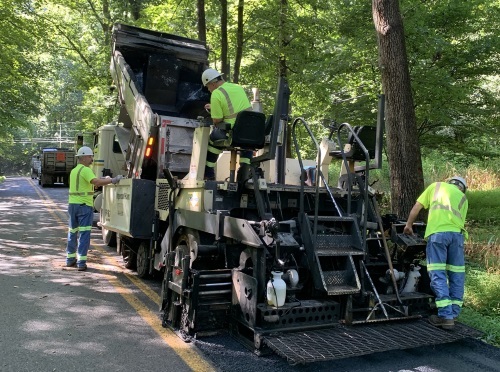America’s rural transportation system is facing a $180 billion funding backlog in funding for needed repairs and improvements, according to a new report.
[Above photo by the WVDOT]
That report – entitled Rural Connections: Examining the Safety, Connectivity, Condition, and Funding Needs of America’s Rural Roads & Bridges and published by the nonprofit transportation research firm TRIP Inc. – found that the roads, highways, rails, and bridges in the nation’s rural areas face a number of significant challenges.

The biggest issues are high crash rates, along with inadequate connectivity and capacity, noted Dave Kearby, executive director of TRIP.
“The health of the nation’s economy and the safety and quality of life in America’s small communities and rural areas ride on our rural transportation system,” he explained in a statement.
“Providing the nation with a rural transportation network that supports rural America’s economy and will support its future development will require that the U.S. invest in a rural transportation system that is safe, efficient, and well-maintained, and that provides adequate mobility and connectivity to the nation’s rural communities,” Kearby said.

TRIP noted that America’s rural transportation system provides both the “first” and “last” link in the supply chain from farm to market; connects manufacturers to their customers; supports the tourism industry; and enables the production of energy and food.
The report also found rural residents are more reliant on the quality of their transportation system compared to their urban counterparts, with vehicle travel in rural communities averaging approximately 50 percent higher than in urban communities.
Other details from TRIP’s latest rural roads report include:
- About 12 percent of U.S. rural roads are rated “poor,” with 19 percent in mediocre condition, 17 percent in fair condition, and the remaining 51 percent in good condition.
- About 8 percent of the nation’s rural bridges received a “poor/structurally deficient” rating, meaning there is significant deterioration to the major components of the bridge. That usually lowers their weight carrying capacity, restricting or redirecting large vehicles, including agricultural equipment, commercial trucks, school buses and emergency services vehicles.
- About 48 percent of rural bridges received a “fair” rating, indicating their structural elements are sound but minor deterioration has occurred to the bridge’s deck, substructure or superstructure. The remaining 44 percent of rural bridges received “good” ratings.
- Traffic crashes and fatalities on rural non-Interstate roads are disproportionately high, occurring at a rate double than on all other roads. In 2020, non-Interstate rural roads had a traffic fatality rate of 2.17 deaths for every 100 million-vehicle miles traveled or VMT, compared to a 1.09 fatality rate on all other roads. While the nation’s rural non-Interstate roads carried 23 percent of all vehicle travel in 2020, 38 percent of fatalities occurred on those roads.
- Rural roads are more likely to have narrow lanes, limited shoulders, sharp curves, exposed hazards, pavement drop-offs, steep slopes, and limited clear zones along roadsides.
Several state departments of transportation are expanding on their ongoing efforts to increase investments in rural mobility efforts.
The Texas Department of Transportation and Kansas Department of Transportation both recently detailed the significant investments they are making in rural transportation infrastructure.

In September, as part of an update to its 10-year transportation plan, the Colorado Department of Transportation proposed to invest nearly $1 billion in rural roads as part of a long-term effort to “remake” the road network connecting smaller communities across the state.
The agency noted that the first four years of its current 10-year plan allocated approximately $382 million to rural pavement condition, subsequently improving rural roads in 55 counties.
During a tour in June of the Maine Western Gateways Project overseen by the Maine Department of Transportation, Governor Janet Mills (D) highlighted the importance of infrastructure investments in strengthening her state’s rural economy.

“The Western Gateways Project is the perfect example of how we can modernize rural infrastructure to ensure that our roadways are safe for people and strong for our economy,” the governor said. “This work … will strengthen the local economy, bolster the forest products industry, support tourism, and improve public safety.”
“The roads that are part of the Western Gateways Project are critical connections that support economic opportunity and quality of life in the villages in the western part of Maine,” added Bruce Van Note, Maine DOT’s commissioner.
“This is how investments in infrastructure can make real differences in the lives of the people who live, work, and recreate in our great state,” he said.



